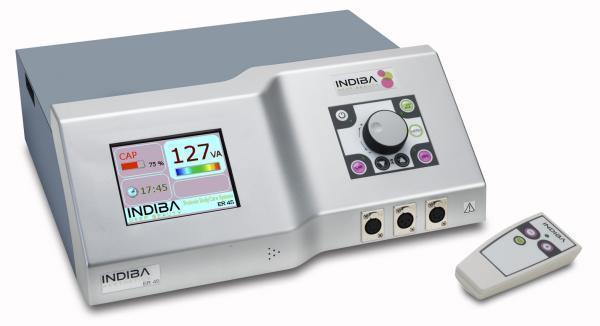All Departments
- Endoscopy
- kyphoplasty
- Minimal Disc Protrusion
- Posture
- Radio Frequency Ablation
- Spinal Cord Stimulator
- Spinal Drug Delivery Systems

Emergency Cases
+91 98252 63969Radio Frequency Ablation
WHAT IS RADIO FREQUENCY ABLATION?

Radiofrequency is latest, safest & very effective method available to deal with many chronic pain conditions
Radiofrequency (RF) is a neurolytic technique that uses heat to produce controlled tissue destruction (thermocoagulation) and thus reduce pain by modulating pain transmission, without causing clinical signs of nerve damage. Pain relief can last for long period before the procedure has to be repeated.
RF is classified as a percutaneous minimal invasive procedure for patients whose pain does not respond to appropriate medical and physical therapy. During the procedure, an insulated needle is placed in the vicinity of the nerve to be lesioned. The needle position is checked, typically using multiple fluoroscopic X-ray views and by testing motor and sensory nerve stimulation. Once the correct position has been established, a grounded electrode is passed through the insulated needle to the tip. A current is then passed through the electrode, which heats up the surrounding tissue (because of the resistance produced by the body) and causes a lesion around the tip. There are two types of RF currently in use.
THE ADVANTAGES OF RADIO FREQUENCY LESIONING
Lesion size can be accurately controlled, allowing lesioning of small nerves without damaging nearby motor and other sensory nerves.
Recovery is rapid and usually uneventful, allowing the patient to return to work or normal daily activity more quickly.
The nerve lesion is usually long-lasting. An accurately done lesion may give pain relief for years.
Nerve lesion heals without neuroma formation.
The rate of side effects and complications is low.
When pain recurs, nerve lesion can be repeated as necessary.
CONTRAINDICATIONS AND LIMITATIONS
Pain control with nerve lesioning is a palliative measure and, therefore, should not be considered in place of corrective surgical treatment.
Before the procedure, the patient must have realistic expectations and must understand that the aim is to reduce the pain, not stop it completely.
Before neurodestructive procedures, diagnostic blocks should give good pain relief. The same diagnostic block should be repeated at least once more, even if the pain relief from the first block was excellent, to decrease the chance of placebo effect. If the result is not clear, differential blocks should be used.
Patients with pain complaints at multiple locations or with wide distribution of pain usually respond poorly to RF procedures.
The patient must realize that single target lesioning may not be sufficient, necessitating complementary blocks for better pain relief.
The patient must realize that single target lesioning may not be sufficient, necessitating complementary blocks for better pain relief.

